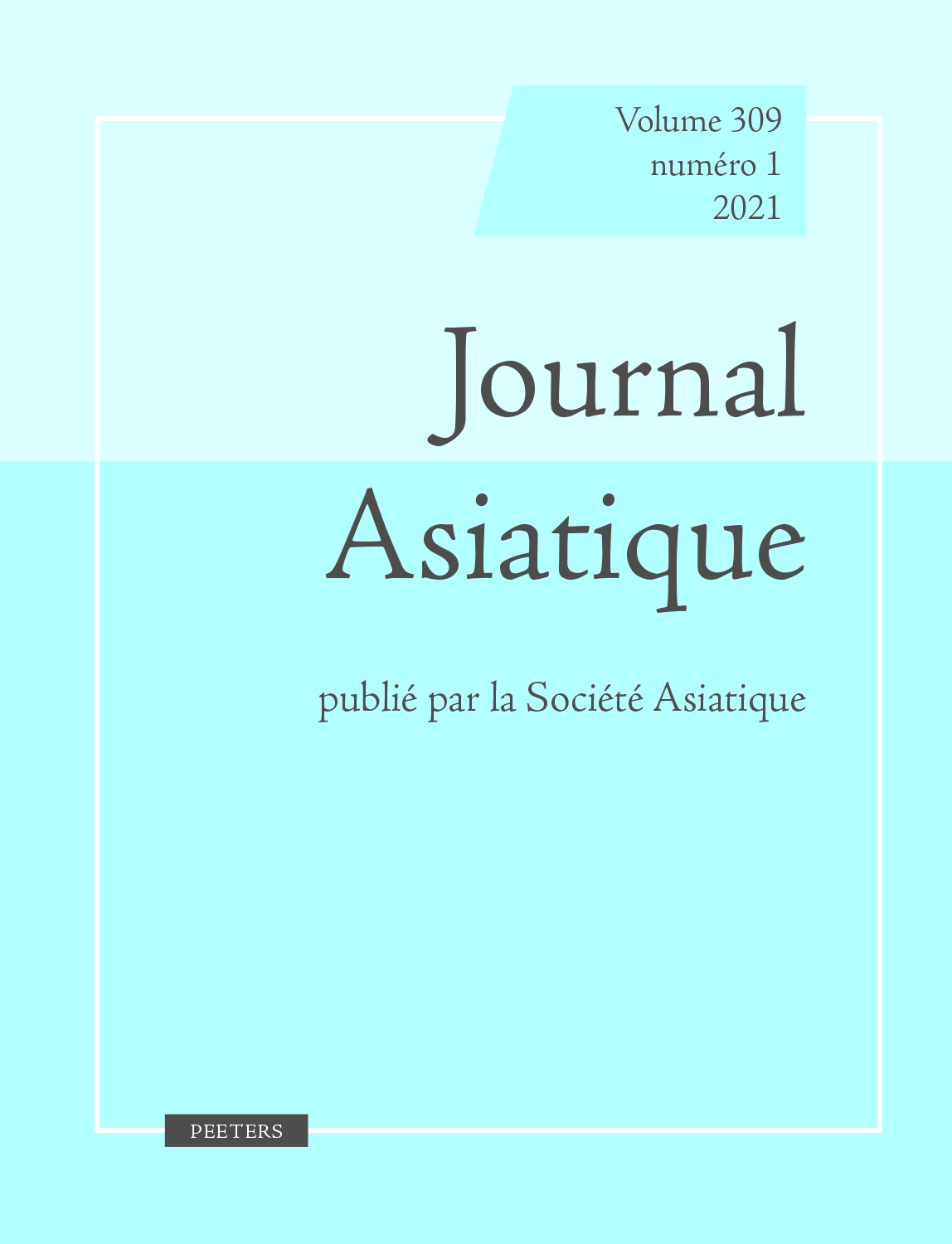 previous article in this issue previous article in this issue | next article in this issue  |

Preview first page |
Document Details : Title: 'Parasite h' in Soqotri Revisited Author(s): BULAKH, Maria Journal: Journal Asiatique Volume: 310 Issue: 2 Date: 2022 Pages: 189-210 DOI: 10.2143/JA.310.2.3291605 Abstract : Since the earliest studies on the Soqotri language (Modern South Arabian branch, Semitic family), it has been observed that a non-etymological h (labeled 'parasite h') often appears before the last vowel of nominal bases in some slots of their paradigm. Until now, the 'parasite h' has been thought to be related to vowel length (etymological or secondary). In the present contribution, the precise conditions for the emergence of the 'parasite h' are established, understood as a combination of phonological and morphological factors (and blurred to a certain degree by the recent process of paradigmatic levelling). None of them supports the traditional hypothesis of the 'parasite h' reflecting vowel length. Rather, the origin of the 'parasite h' lies in breathy phonation characteristic of final syllables ending in sonorants at a certain period in the history of Soqotri. Depuis les premières études sur la langue soqotri (branche moderne de l’Arabe du Sud, famille sémitique), il a été observé qu’un h non étymologique (appelé «h parasite») apparaît souvent avant la dernière voyelle des bases nominales dans certains aspects de leur paradigme. Jusqu’à présent, on pensait que le «h parasite» était lié à la longueur de la voyelle (étymologique ou secondaire). Dans la présente contribution, les conditions précises de l’émergence du «h parasite» sont établies, comprises comme une combinaison de facteurs phonologiques et morphologiques (brouillée dans une certaine mesure par le récent processus de nivellement paradigmatique). Aucune d’entre elles ne renforcent l’hypothèse traditionnelle selon laquelle le «h parasite» reflète la longueur de la voyelle. L’origine du «h parasite» réside plutôt dans la phonation vibrante, caractéristique des syllabes finales se terminant par des sonores à une certaine période de l’histoire du Soqotri. |
|


